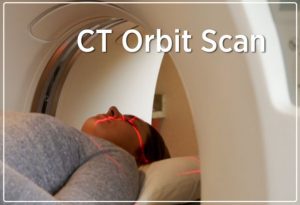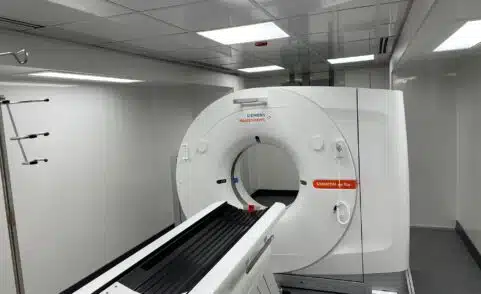
Sheet Metal Workers: Protecting Your Eyes in an MRI
If you’re a sheet metal worker, you’ve spent your life building or repairing things, but sometimes it’s you that needs to be fixed. There are many medical reasons your doctor may tell you to get an MRI. Before you go into the machine there are some job-related risk factors you need to consider.
Metal workers can get little shavings of metal in their eyes and not even know it, explains Dr. Alex Georges, a RAYUS Musculoskeletal Radiologist.
“The risk with metal in the MRI is that it can heat up and cause burns or it can migrate or move around. Depending on where it is, we don’t want it to migrate and affect an important structure,” she says.
Metal splinters or shavings in the eye aren’t the only risk. Bullets or shrapnel, medically implanted metal, even some types of tattoos or permanent eye makeup can react to the strong magnetic field inside the MRI. If something in your body is ferromagnetic (meaning attracted to the magnet) it can heat up, begin to vibrate and start to move. That’s the last thing you want to happen to a chip of metal lodged in your eye.
Step 1: Questions to Consider
At RAYUS part of our safety protocol is to ask you a lot of questions before you get your scan. It starts by filling out a screening sheet with a long list of “yes” or “no” questions about your past medical history. There’s a section of that screening that asks if you’ve ever worked with metal or if there’s a chance that any pieces of metal have gotten into your body.
After you go through the laundry list on paper, the technologist who will preform your scan will ask you even more questions. It may feel like the inquisition, but sometimes patients forget to mention something on the questionnaire but bring it up when talking to a technologist. The whole process is designed to make sure you are safe to get an MRI.
Step 2: CT of the Eyes
If there’s any chance you could have metal shards in your eyes, you’ll have a CT of your eyes (called an Orbit CT scan). The CT will let us look inside both your left and right eye socket. CT does NOT use a magnet, so there is no risk involved even if you do have something in your eye. MRI technologist Travis Gould says when he checks out metal workers, he rarely finds metal shavings.
“99 percent of the time there’s nothing in there, but it only takes one time to be wrong for someone to be seriously injured,” he says.
The CT is a quick scan and if you get the “all clear” you’ll head to the MRI machine for your diagnostic imaging.
Step 3: Alternative Imaging
Most of the time, Dr. Georges says, the Orbit CT scan finds nothing. In the rare case where the CT scan finds metal in your body, you will not get an MRI. Instead, RAYUS will work with your doctor to find a different diagnostic test.
If you are a metal worker and are cleared for MRI, keep in mind that you always have a way to communicate with your technologist even though you’re alone in the room. You’ll be closely monitored through a window throughout your scan and you’ll get a squeeze ball to hold in your hand. If anything feels strange, you give it a squeeze to alert your technologist. Travis says he always wants to hear from his patients, no matter how small the concern. “I give them the squeeze ball and say, ‘Hey, if you feel anything, anything at all, you let me know. I’ll come in and get you right out.”


